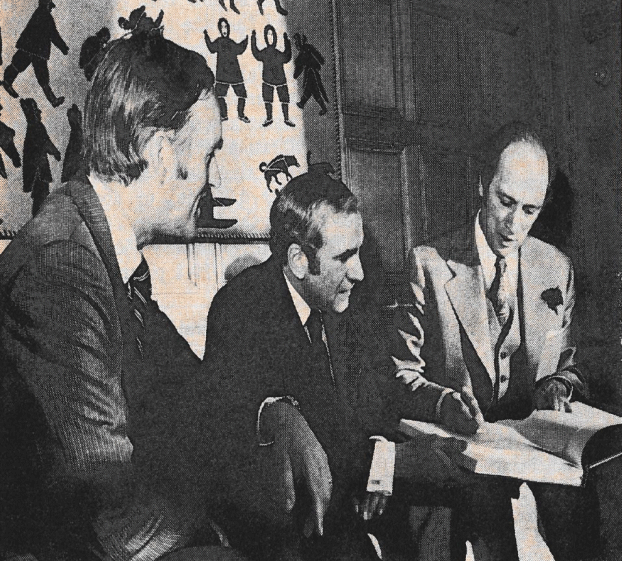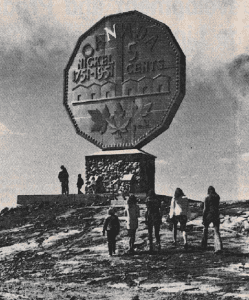
November 1974: Prime Minister P.E. Trudeau receives a copy of the 4TH edition of the New National Atlas of Canada, prepared by the Department of Energy, Mines and Resources. For the first time, a commercial publisher, The Macmillan Company of Canada, partnered with the department to produce English and French versions of a conventionally bound version of this atlas, whose maps emphasized the nature, extent and use of the physical resources of Canada, and their effect on the economy and society of the country. The National Atlas is now produced by the Canada Centre for Remote Sensing, a division of Natural Resources Canada.
From 1968-1978, the total value of the minerals Canada produced quadrupled to about $20 billion. Much of that gain was caused by enormous increases in the prices of energy and the increase of gold and silver prices. It was also a decade of greater societal awareness of some of the consequences of mining. The first environmentalist movements took place in Canada in the 1970s and the decade also marked the dawning of native land claims as First Nations people began to claim those areas that had been their traditional territories before the arrival of the Europeans. In 1973, the CIM Foundation was established “to provide the means of creating, developing, and maintaining a program of continuous education for the members of the Institute.”

Registration totalled 2,681 for the 78th Annual General Meeting of CIM in 1976, the largest ever held in Quebec City. The Plenary session had the theme ‘Management of Our Mineral Resources’ and featured the Ministers of Natural Resources of of Quebec, Ontario and Manitoba. CTV’s national network covered the entire morning session. The annual dinner featured a distinguished head table and the presentation of Institute Awards.

The Big Nickel was the brainchild of Sudbury businessman Ted Szilva. In 1965, he opened a hilltop park adjacent to the mines of International Nickel Co. This giant replica of the Canadian 5-cent piece, measuring 30 feet across and 2 feet thick, was the main attraction. Admission to the grounds was $1 for adults and 50 cents for kids. Today the Big Nickel is part of Dynamic Earth, an interactive science museum owned and operated by Science North, with geology and mining history exhibits that highlight Sudbury’s mining heritage.
